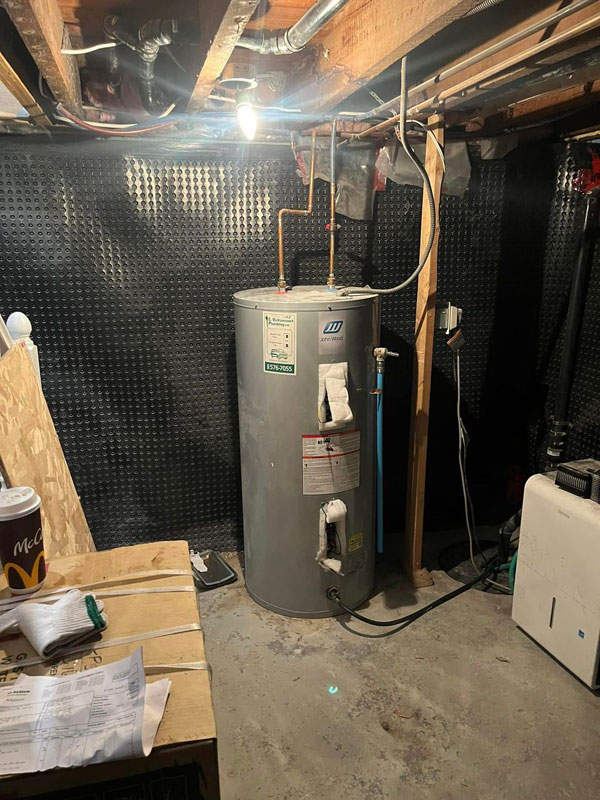Tankless Water Heaters
What Is A Tankless Water Heater?
Tankless water heaters, also called on-demand water heaters, heat water only when you need it.
Unlike traditional water heaters that store hot water in a tank, these units heat water directly as it passes through the system.
When you turn on a hot water tap, cold water travels through a pipe into the unit, where a gas burner or an electric element heats it.
This provides a continuous supply of hot water without the need to store and constantly reheat it
Advantages of Tankless Water Heaters
- Energy Efficiency
Tankless water heaters are more energy-efficient than traditional models. Traditional water heaters maintain a reservoir of hot water, resulting in standby heat loss. In contrast, tankless units heat water only on demand, which can reduce energy use by 24-34%, leading to lower energy bills and a smaller carbon footprint. - Endless Hot Water Supply
With tankless water heaters, you have a continuous supply of hot water. This is particularly useful for large households or during periods of high hot water demand, such as running multiple appliances simultaneously or taking long showers. - Space Saving
You can install tankless water heaters in small spaces where traditional water heaters wouldn’t fit. Mount them on walls, both indoors and outdoors, to free up floor space. - Longer Lifespan
Tankless water heaters generally last longer than traditional storage tank models. While conventional water heaters have a lifespan of 10-15 years, tankless units can last up to 20 years or more with proper maintenance. This can offset their higher initial cost over time. - Reduced Risk of Water Damage
Traditional water heaters can develop leaks, leading to water damage and expensive repairs. Tankless water heaters do not store water, therefore they greatly reduce the risk of leaks and water damage.
Upgrading to a Tankless Water Heater
- Assessment and Planning
Before replacing your old water heater with a tankless model, it’s important to assess your hot water needs and determine the appropriate size and type of tankless unit. Factors such as the number of fixtures, peak hot water demand, and the climate in your area will influence your choice. Consulting with a professional plumber or HVAC technician can help you make an informed decision. - Choosing the Right Unit
Tankless water heaters are available in several sizes. Selecting a unit that can adequately meet your household’s hot water requirements without overburdening the system is essential. Look for models with high energy efficiency ratings and consider whether you need a gas or electric unit. Gas units usually offer a higher flow rate, making them more suitable for larger homes. On the other hand, electric models are easier to install and can be an ideal choice for smaller households. - Preparing the Installation Site
Installing a tankless water heater requires proper preparation of the installation site. This may involve upgrading your home’s electrical system or gas lines to accommodate the new unit. Ventilation is also a key consideration for gas-powered tankless heaters, as they require venting to the outside to safely expel exhaust gases. Additionally, you may need to install water and gas shut-off valves, as well as a pressure relief valve. - Installation Process
You should install a tankless water heater only if a licensed professional does it, as they will be familiar with local building codes and safety issues. The process typically involves:
- Removing the old water heater: The existing water heater is disconnected and removed, and the area is prepared for the new unit.
- Mounting the tankless unit: The new tankless water heater is mounted on the wall and securely fastened.
- Connecting water lines: Hot and cold water lines will be connected to the new unit, ensuring adequate flow and correct pressure.
- Gas or electrical connections: For gas models, connect the gas line and install proper venting. For electric models, wire the unit into the home’s electrical system.
- Testing and calibration: Test the system for leaks and proper operation, and calibrate the temperature settings to ensure optimal performance.
- Maintenance and Care
To ensure the longevity and efficiency of your tankless water heater, regular maintenance is essential. This includes descaling the unit to remove mineral buildup, checking for leaks, and inspecting the heating elements or burners. Some manufacturers recommend that you perform annual maintenance, which a professional technician can handle.
Conclusion
Tankless water heaters offer numerous benefits such as energy efficiency, endless hot water supply, space-saving design, longer lifespan, and reduced risk of water damage. Replacing your old water heater with a tankless model involves careful assessment, choosing the right unit, preparing the installation site, professional installation, and regular maintenance. By considering these factors, you can make an informed decision and enjoy the advantages of a tankless water heating system for years to come.


